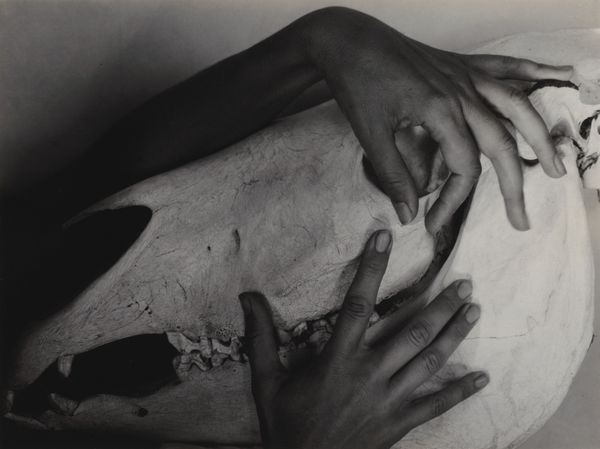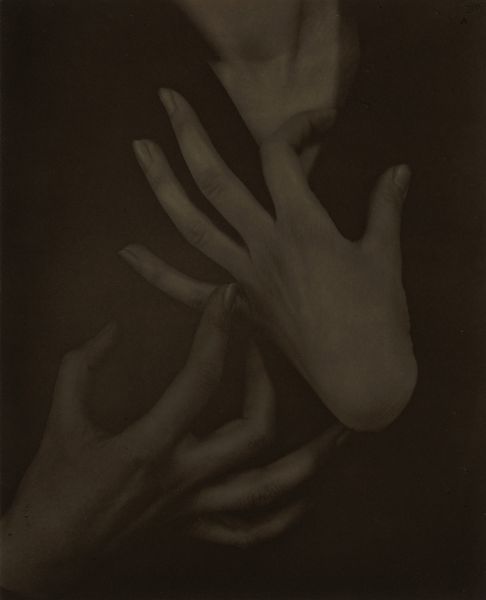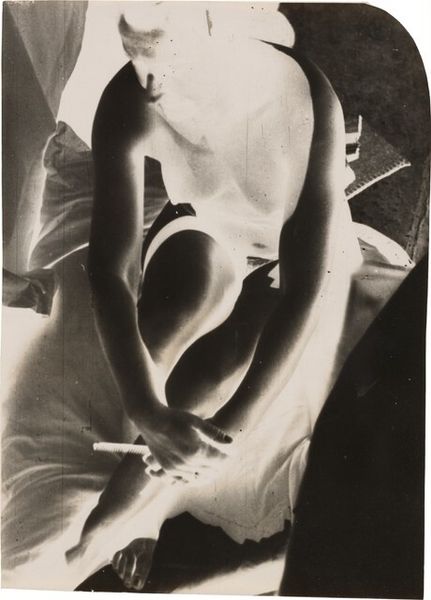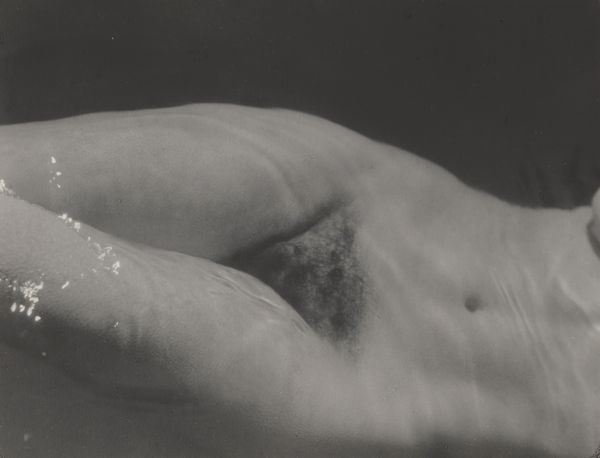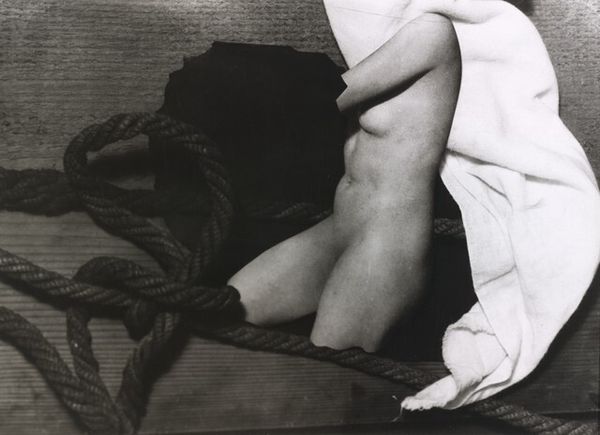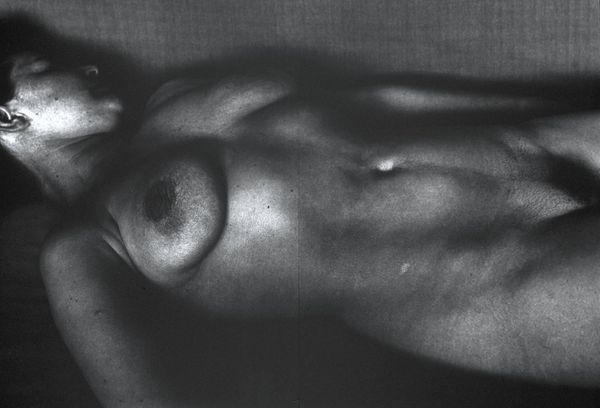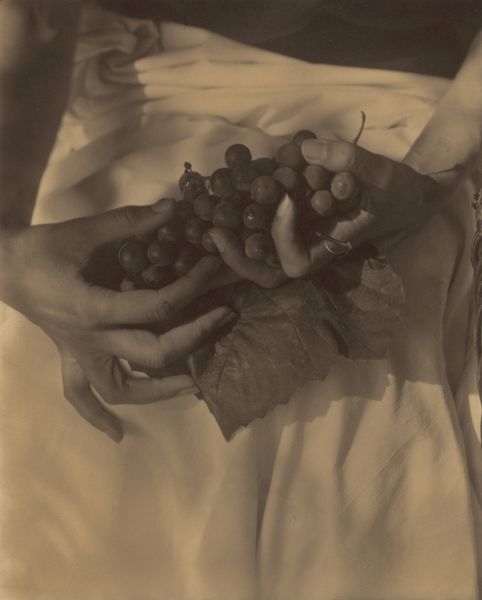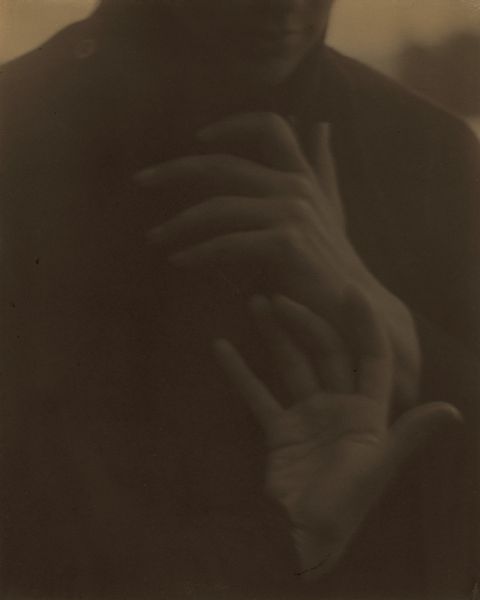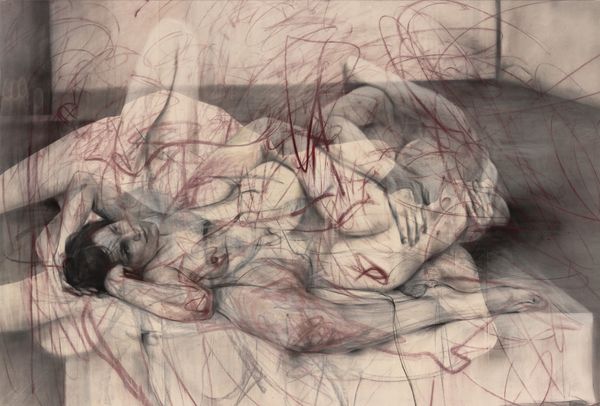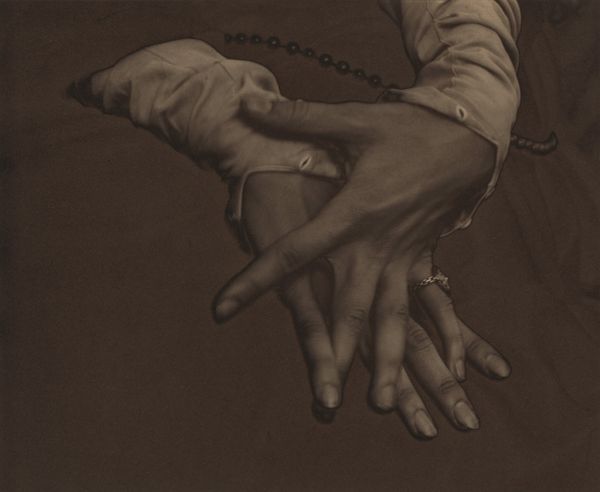
photography, gelatin-silver-print
#
still-life
#
photography
#
gelatin-silver-print
#
modernism
Dimensions: 19.3 × 24.4 cm (image); 25 × 20.2 cm (paper)
Copyright: Public Domain
This photograph is one of extreme contrasts. Life and death, light and dark, skin and bone. It’s a striking and thought-provoking image. Do you find it chilling, interesting, or something else entirely? ‘Hands and Horse Skull’ was captured in 1931 by the American photographer Alfred Stieglitz (1864-1946). Stieglitz is known as a pioneer of modern photography, and was instrumental in proving that photography was an equal art to painting and sculpture. He believed it was the perfect medium to capture the atmosphere and changeability of modern life. This specific photograph depicts the bleached skull of a horse against a plain background. We see its eye and nose sockets, as well as several white teeth. Two hands rest on the skull, one atop the eye and the other on the jawbone. These are actually the hands of the famous painter Georgia O’Keeffe! Just before this photo was taken, O’Keeffe (1887-1986) had returned to New York after living in New Mexico. She brought with her a collection of bones, including this huge skull. The skull can be seen in several of O’Keeffe’s paintings, including ‘Horse’s Skull with Pink Rose’ (also 1931). Stieglitz and O’Keeffe had married in 1924. The photograph is a single close-up. The monotone colour palette emphasises the juxtaposition between O’Keeffe’s tanned hands and the pristine whiteness of the bones. Why might Stieglitz have decided to focus on the painter’s hands? Could he be suggesting her practical skills?
Comments
No comments
Be the first to comment and join the conversation on the ultimate creative platform.
